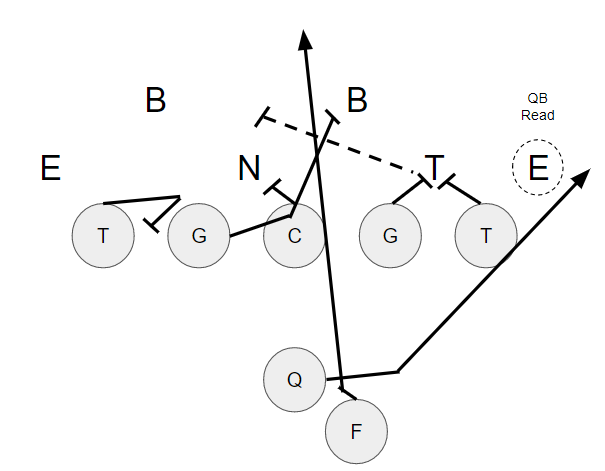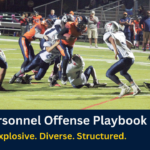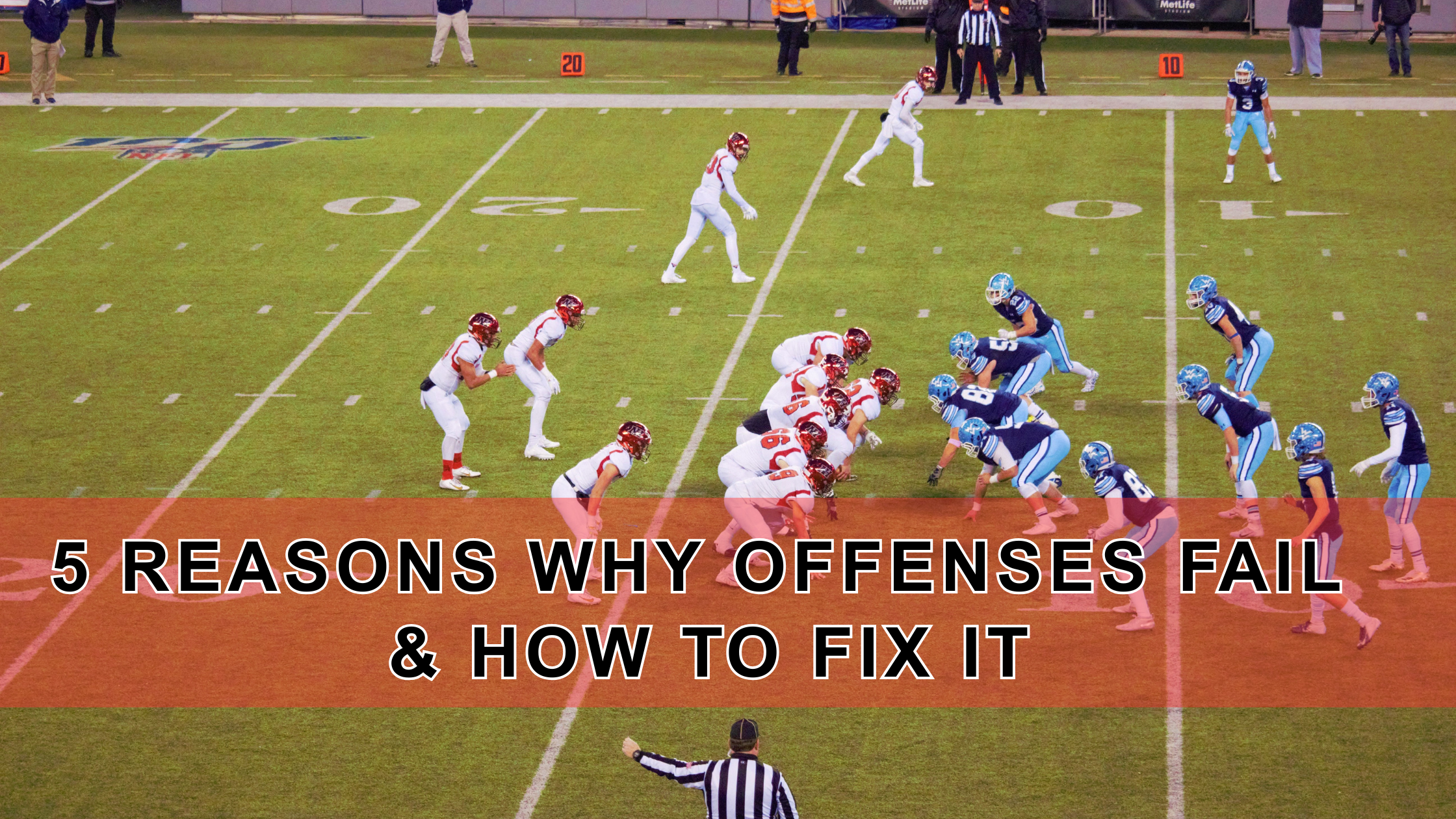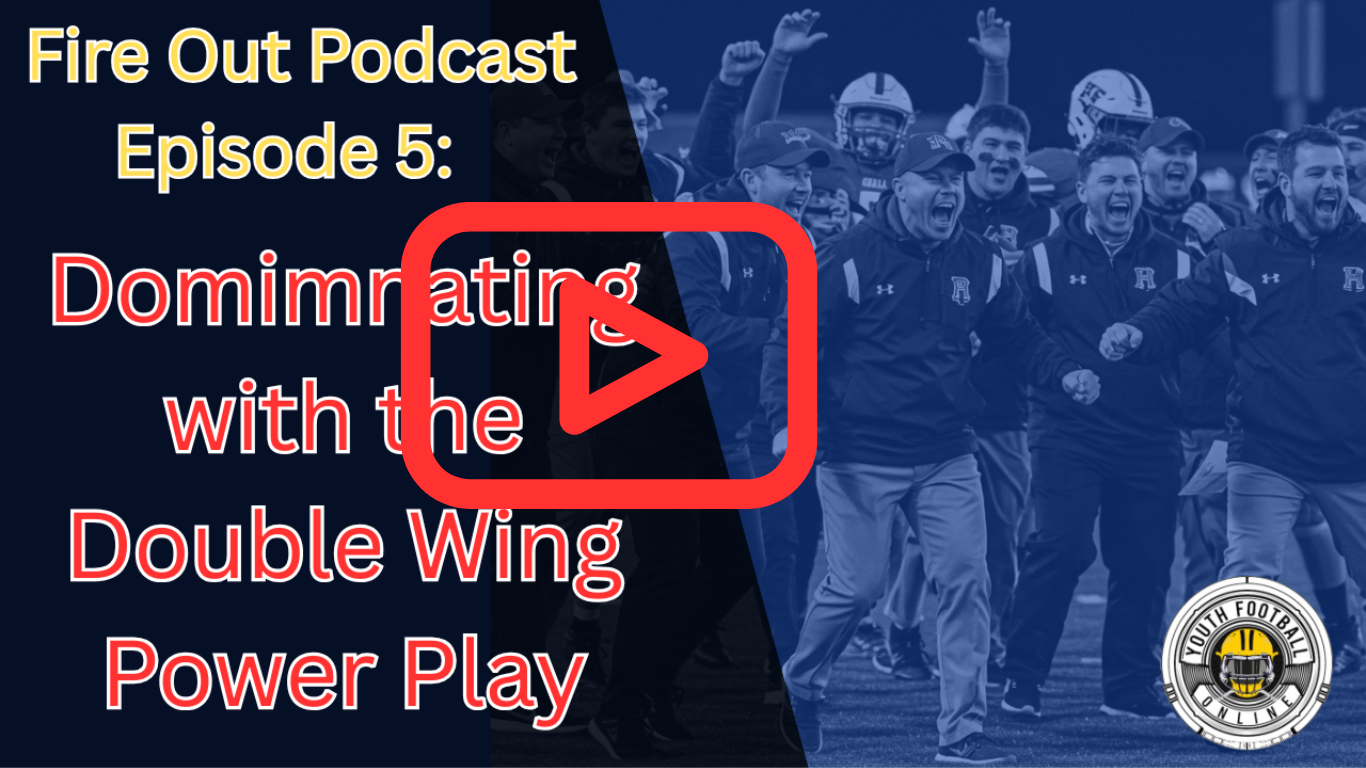Maximizing the Power Blocking Scheme
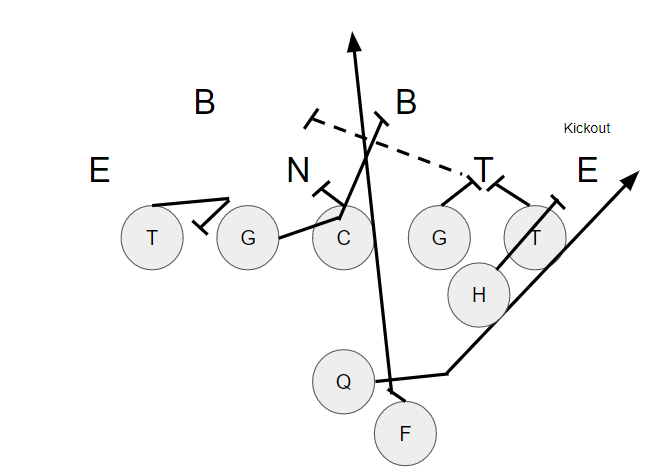
The A Gap Power Blocking Scheme is one of the most used run schemes in football. It allows the offense to get a double team at the point of attack while also bringing a Guard from the backside to lead up on the playside blocker. While this is one of the best blocking schemes it does take some time to install and perfect. As a result, you want to be able to use the blocking scheme with different backfield actions.
Maximizing the Power Blocking Scheme
The basic concept of the A Gap Power is split into two sides. On the front side the linemen are responsible for their inside gap. If there isn’t a defender in their gap they will double team any linemen in their outside gap. On the backside of the play the Guard will be pulling around for the playside linebacker as a lead blocker. The backside Tackle will make a crush block where he steps to ensure defenders don’t get through the B Gap and then hinges out to ensure no one comes through the C Gap.
The different ways to run the A Gap Power all revolve on how to deal with the Playside C Gap player. There are two things to do with this player, the offense can either block him or have the Quarterback read him.
By blocking the C Gap player the offense can ensure that the ball will be run through the A Gap player. This is a great way to force the defense to deal with a hard running back and get guaranteed yards. The most popular way to block this C Gap Player is by lining up a Fullback or H Back inside of the Tackle so he can have leverage to kick the player out.
Related Content: 3 Ways to Run the Power out of Spread
While the traditional way of running Power is to block the CGP this can be a difficult block. Many teams will teach the defender to wrong arm the block and force the runner to bounce the ball out. This takes the runner away from his lead block. The solution to this is to read the defender. A defender who is hard to block is easy to read. By reading the defender the offense will slow him down and make him think about his assignment. Once the CGP starts to slow down he has now become easier to block and you can go back to running the ball through the A Gap.
Power Mesh from 2×2
One of the best things about this scheme are the different ways the offense can read the CGP. The most basic way can be run from a 2×2 set with only one back. We have traditionally called this play Power Mesh. In this play the Running back will be running the Power track. The Quarterback will read the CGP. If he comes down to tackle the Running Back the Quarterback will pull the ball and run outside. If the defender stays where he is or runs upfield the Quarterback will hand the ball off to the Running Back who will run the A Gap Power.
While Mesh is very straight forward sometimes there is a dynamic runner who is better on the outside while the Quarterback is a better Power runner. In these situations the offense can move to the Inverted Power. In the Inverted Power scheme the Running Back (or Receiver running a Jet Sweep) will now run the outside path while the Quarterback will be running the Power path.
While there are many different ways to run the Power the last one we will talk about is Arc Power. In Arc the offense will line up with a Fullback or H Back in the backfield. On the snap of the ball he will move towards the CGP making it look like he is going to block him. At the last second he will loop around the defender to the outside. This allows him to be a lead blocker if the Quarterback does pull the ball. The result is that the CGP doesn’t know if the blocker is coming to get him or arcing past him. This alone will slow him down and make him easier to block on future plays.
The A Gap Power is a great blocking scheme. While it is expensive to install and it does take time the ability to run it with multiple different backfield actions makes it a great addition to any offense.
(See Also) Power Pass out of the Diamond Formation

